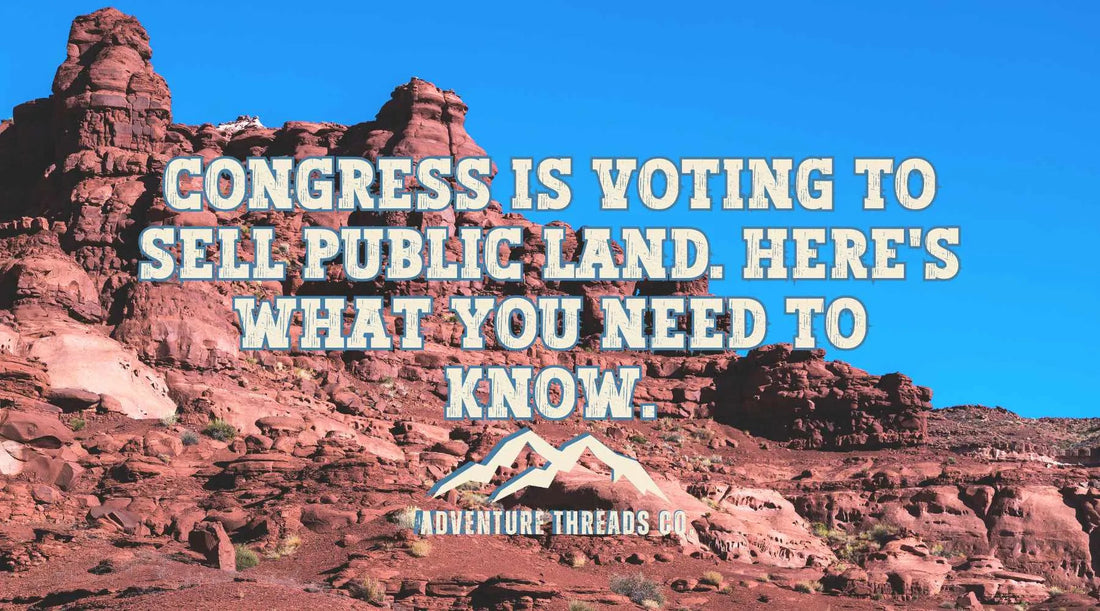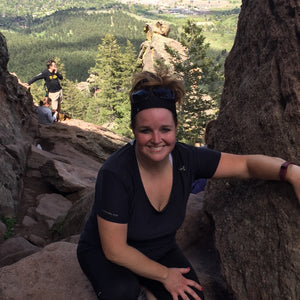
🏞️ Congress Is Voting to Sell Public Land. Here's What You Need to Know.
Share
Congress is preparing to vote on a proposal that could sell nearly half a million acres of public land. This decision could reshape access to these federally managed areas, especially those surrounding some of the West’s most iconic landscapes.
The move is raising concern among conservationists, park visitors, and land management experts—many of whom see this as a major inflection point in how we treat America’s remaining public land. Let's talk about what this really means and the potential impacts.
📍What’s Being Proposed?
The amendment, introduced by Representatives Mark Amodei (NV) and Celeste Maloy (UT), would authorize the sale of approximately 460,000 acres of federal public land. That includes:
-
Land near St. George, Utah, bordering Zion National Park
-
Parcels in Clark and Pershing Counties, Nevada
NPR reports that this legislation would allow these lands to be transferred to private owners—potentially opening them up to development, resource extraction, or restricted access.
While the parks themselves aren’t directly for sale, the surrounding public land acts as a protective buffer. These areas support ecosystems, cultural resources, and access to wild spaces for everyday people.
🏕️ What Public Land Areas Could Be Affected?
Although the exact parcels haven’t been publicly mapped, land managers and conservation groups have expressed concern over areas surrounding:
-
Zion National Park (UT) – Known for its red cliffs, canyons, and fragile desert ecosystems
-
Great Basin National Park (NV) – Home to ancient pines and pristine dark skies
-
Grand Staircase–Escalante National Monument (UT) – A remote haven of fossil beds and solitude
-
Red Cliffs Desert Reserve (UT) – A vital refuge for the threatened desert tortoise
According to the National Parks Conservation Association, selling adjacent public land could jeopardize the ecological health and visitor experience of these treasured places.
🌲 What’s at Stake?
Public lands aren’t just scenic—they’re part of America’s story and they are owned by us. They protect clean air and water, host fragile habitats, and offer space for families, adventurers, and future generations to roam freely.
Once public land is sold, access often disappears. These places may become sites for roads, mines, or gated private retreats. They’re at risk of fragmentation, pollution, and irreversible change.
This proposal echoes recent attempts to promote public land selloff as an economic development tool. But critics warn that what’s gained in short-term profit may be lost in generational value—especially when the land in question borders national parks or Indigenous cultural sites.
As AP News reports, tribal leaders and environmental advocates say the scale and speed of this initiative threaten public process and accountability.
🌎 Why These Spaces Were Set Aside in the First Place
America’s earliest conservation leaders didn’t protect these places by accident. They understood the value of wild space—for peace, for wonder, and for future generations. The goal wasn’t just to preserve scenery, but to preserve possibility.
National parks and open spaces were set aside so anyone, regardless of background, could experience freedom in the natural world. They are places where people hike trails with their kids, pitch tents under the stars, or stand in awe at the edge of a canyon.
The memories we make here aren’t just personal—they’re part of a larger story. One that’s still being written.
🌄 Why These Lands Matter Beyond Recreation
For millions of Americans, these spaces are more than vacation spots. They are places of healing, learning, and identity.
Whether you're walking through canyons in Utah or relaxing at a trailhead in Nevada, these places offer quiet and peace. They give us a way to disconnect from noise and reconnect with nature.
They also fuel local economies. Outdoor recreation contributes billions to small towns like Springdale, Utah, and Baker, Nevada.These towns rely on visitors who explore the areas around Zion National Park and Great Basin.
When surrounding land becomes developed or fragmented, the impact spreads fast. It affects jobs, wildlife, and the visitor experience.
That’s why decisions like this vote matter. What may seem like a distant land-use change has real consequences.
It affects the landscapes we hike, the water we drink, and the memories we make in wild places.
🧭 Why We’re Talking About It
Adventure Threads Company was launched because of national parks and public places like Zion. We hike them, we explore them, and we create memories with our families on the trails.
That belief is stitched into every piece we create. Our Protect Our Public Lands T-Shirt was designed to give voice to this mission. 🌲
And with every shirt sold, we plant a tree in partnership with the National Forest Foundation. That’s not just a pledge—it’s action.
National Parks Aren’t the Destination – They’re Where You Find Yourself.



 https://adventurethreadscompany.com
https://adventurethreadscompany.com